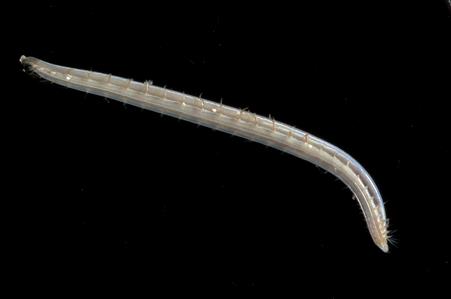General Description
In members of this genus branchiae and lateral eye spots are present and there is a ventral groove present along almost entire body. This species is usually unpigmented and has a pointed prostomium. Body up to about 3 cm long.
Biology
Other species, and genera, of Opheliidae occur in our region, but the two commonest species in Port Phillip Bay are Armandia sp. and Polyophthalmus sp. Both species are active deposit feeders which live in soft sediments where they consume buried organic particles; they do not form permanent burrows. Nephtys australiensis is also found in estuarine areas, often in association with the nereidid polychaete Australonereis ehlersi.
Habitat
Port Phillip Bay and other similar coastal habitat, inshore and continental shelf.
Soft substrates
Distribution guide
Southern Australia.
Species Group
Depth
Shore (0-1 m)
Shallow (1-30 m)
Water Column
Max Size
3 cm
Diet
Organic matter
Commercial Species
No
Global Dispersal
Native to Australia
Species Code
sp. 1
Identify
Conservation Status
- DSE Advisory List : Not listed
- EPBC Act 1999 : Not listed
- IUCN Red List : Not listed






